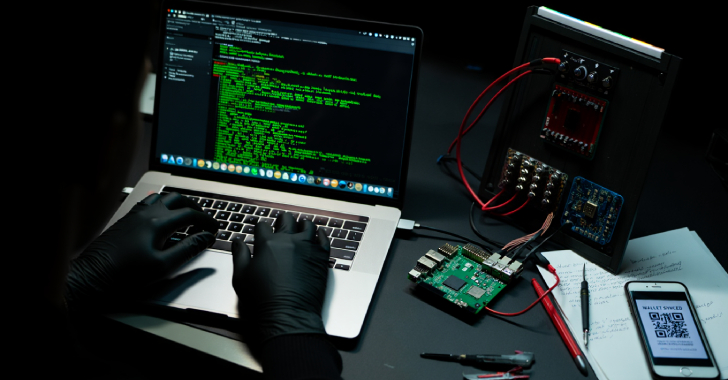
Social Engineering Testing in the Age of Virtual Realities
As technology continues to advance at an unprecedented rate, so too do the methods and tools used by malicious actors seeking to exploit it. One area where this is particularly evident is in the realm of social engineering, a deceptive practice aimed at manipulating individuals into divulging confidential information or performing actions they wouldn’t otherwise. With the emergence of virtual realities (VR) and augmented realities (AR), the landscape of social engineering testing has evolved dramatically. In this article, we’ll explore how social engineering testing has adapted to this new digital frontier and the challenges it presents.
The Evolution of Social Engineering
Social engineering has been a longstanding threat to organizations and individuals alike. Historically, it involved tactics such as pretexting, phishing emails, and phone impersonation to trick individuals into revealing sensitive information. These tactics preyed on human psychology, relying on trust, authority, and fear to manipulate targets.
However, with the advent of VR and AR, the scope of social engineering has expanded significantly. These immersive technologies offer a new dimension for attackers to exploit, blurring the lines between reality and virtual worlds. To understand the implications, we need to explore how social engineering testing is adapting to this changing landscape.
Virtual Realities and Vulnerabilities
Virtual realities like VR and AR have taken the tech world by storm, offering immersive experiences that can mimic the real world or create entirely new ones. As these technologies become more accessible and integrated into our daily lives, they also introduce novel vulnerabilities for social engineering attacks.
- Identity Manipulation
In VR and AR environments, individuals often create avatars or digital personas. These virtual identities can be manipulated by attackers to deceive and manipulate users. For example, an attacker could impersonate a trusted friend or colleague’s avatar to gain access to sensitive information.
- Sensory Manipulation
VR and AR engage multiple senses, including sight and sound, to create convincing experiences. Attackers can use these sensory inputs to deceive users. For instance, they might use convincing audio cues or visual distractions to divert a user’s attention while carrying out an attack.
- Spatial Deception
Spatial awareness and movement are crucial in virtual realities. Attackers can exploit this by manipulating the virtual environment to mislead users. For example, they could create fake pathways or obstacles that lead users to unintended destinations where they can be targeted.
- Emotional Manipulation
VR and AR experiences can evoke powerful emotions, making users more vulnerable to manipulation. Attackers can craft scenarios that play on users’ emotions, increasing the likelihood of compliance with their requests or divulging sensitive information.
The Challenges of Social Engineering Testing in Virtual Realities
Given the unique vulnerabilities introduced by VR and AR, social engineering testing has had to adapt accordingly. However, this transition comes with its own set of challenges.
- Realism vs. Security
One of the primary challenges is striking a balance between creating realistic scenarios for testing and ensuring security. The more realistic a VR social engineering test is, the more effective it will be at exposing vulnerabilities. However, this realism can also pose a risk, as it can be challenging to control and contain the test environment.
- Ethical Considerations
The use of VR for social engineering testing raises ethical questions. Testers must be careful not to cross ethical boundaries by engaging in actions that could harm or traumatize users in any way. The line between a realistic test and an unethical intrusion can be thin, requiring careful planning and consideration.
- Technical Expertise
Conducting social engineering tests in virtual realities requires a high level of technical expertise. Testers need to be well-versed in both the VR/AR technology and social engineering techniques. Finding individuals with the right skill set can be a challenge.
- User Awareness
VR and AR users are often less aware of potential social engineering threats within these immersive environments. Traditional awareness training may not be as effective in preparing individuals for virtual reality social engineering attacks. New approaches to user education and awareness are needed.
Strategies for Social Engineering Testing in Virtual Realities
Despite the challenges, there are strategies that can help organizations adapt to the evolving landscape of social engineering testing in virtual realities:
- Simulation Environments
Creating controlled simulation environments for testing is crucial. These environments should mimic the organization’s virtual reality setups as closely as possible, allowing for realistic testing while maintaining security.
- Ethical Guidelines
Clearly defined ethical guidelines and standards must be established for social engineering testers working in virtual realities. These guidelines should prioritize user safety and consent while still effectively assessing vulnerabilities.
- Training and Certification
Training and certification programs should be developed to ensure that testers have the necessary skills and knowledge to conduct VR social engineering tests safely and effectively.
- User Education
Organizations should invest in educating their employees and VR users about the potential risks of social engineering in virtual realities. This education should focus on the unique aspects of VR and AR environments.
- Continuous Testing
Social engineering testing should be an ongoing process, with regular assessments and updates to security protocols. As virtual reality technology evolves, so too should the testing methods.
Conclusion
The age of virtual realities has ushered in a new frontier for social engineering testing. With the immersive and interactive nature of VR and AR, attackers have more tools at their disposal to manipulate users. As a result, organizations must adapt their social engineering testing methods to this changing landscape.
While the challenges are significant, strategies such as creating controlled simulation environments, establishing ethical guidelines, providing training and certification, educating users, and maintaining continuous testing can help organizations stay ahead of emerging threats. By addressing these challenges head-on and being proactive in their approach, organizations can better protect themselves and their users from social engineering attacks in the age of virtual realities.
Contact Cyber Defense Advisors to learn more about our Social Engineering Testing solutions.





